This question is similar to THIS ONE, but I still could not solve my issue after reading.
Basically I am trying to make the table below dynamic in size. Also, when a value is changed, I want it to update the underlying JavaScript function.

**However I can't figure out how to both reference the elements uniquely and also pass the relevant parameters through to update the object. updatePlanner() is called upon a change, but the the value passed through is always the last unique ID created: in this case "2-11". What am I doing wrong? **
Here is my initial object:
builerObj.dataArray = [4,3,[[[5, .65, 0],[5, .75, 0],[5, .85, 1]],
[[3, .70, 0],[3, .80, 0],[3, .90, 1]],
[[5, .75, 0],[3, .85, 0],[1, .95, 1]],
[[5, .40, 0],[5, .50, 0],[5, .60, 0]]]];
Here is the function to update it (Notice that I pass through the Id of an element to reference its value):
function updatePlanner(passedId, week, set, index) {
var value = document.getElementById(passedId).value;
// I've removed some irrelevant manipulation of the value variable
builerObj.dataArray[2][week][set][index] = value;
columns = $('#planBuilderWeeks')[0].value; // columns
rows = $('#planBuilderSets')[0].value; // rows
createPlanningTable(columns, rows);
}
And here is the table generator (styling code removed):
function createPlanningTable(columns, rows){
var body = document.getElementById('planBuilderTable'),
tbl = document.createElement('table');
// Styling and Headers are here
for(var i = 0; i < rows; i++){
var tr = tbl.insertRow();
var week = 0;
for(var j = 0; j < columns * 3; j++){
var td = tr.insertCell();
var currID = i.toString() + "-" + j.toString(); // Unique ID for each input
if (j % 3 == 0 ){ // This handels all columns labeled '%Max'
var currItem = document.createElement('input');
currItem.value = builerObj.dataArray[2][week][i][0];
currItem.addEventListener("change", function(){
updatePlanner(currID, week, i, 0); // This is where I haven't been able to make it work
}, false);
} else if (j % 3 == 1){ // This handels all columns labeled 'Reps'
var currItem = document.createElement('input');
currItem.value = builerObj.dataArray[2][week][i][1];
} else if (j % 3 == 2){ // This handels all columns labeled '+'
var currItem = document.createElement('button');
currItem.style.display = "block";
var span = document.createElement('span');
if (builerObj.dataArray[2][week][i][2] == 1){
span.className = "glyphicon glyphicon-ok box";
} else{
span.className = "glyphicon box";
}
currItem.appendChild(span);
week += 1;
} else {
alert("Something went wrong");
}
currItem.setAttribute("id", currID);
td.appendChild(currItem);
}
}
body.innerHTML = "";
body.appendChild(tbl);
}